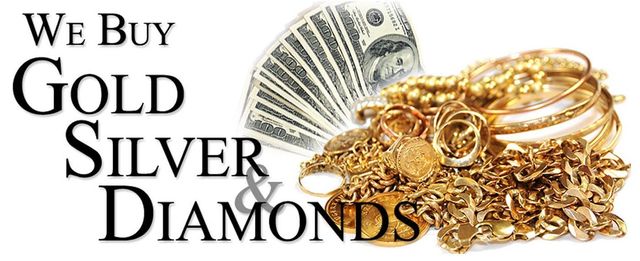Determining the Genuine Value of Your Pieces for a Profitable Sale
Wiki Article
When it comes to selling ornaments, understanding its actual value is essential to securing a successful transaction. Ornaments can hold substantial emotional and monetary worth, so knowing how to evaluate its worth can help owners make informed choices. Various factors influence the price of jewelry, including the composition, brand reputation, buyer interest, and overall condition of the item. By taking into account these aspects, sellers can ensure they set a fair valuation that reflects the ornament’s true worth.

The first step in establishing the value of ornaments is identifying its components. Most ornamental pieces is made from valuable alloys like gold, silver, or the noble metal. The purity of these materials, measured in carats for the precious yellow metal and as a percentage for the white metal and platinum, is crucial in valuation. In addition, gemstones such as brilliants, green gems, or sapphires enhance the overall worth of a jewel. Factors such as the carat weight, hue, clarity, and shape of stones are critical when assessing their value. Comprehending these aspects allows sellers to gain insight into what their jewelry might be valued at on the open exchange.
Another critical aspect to consider is the label or designer of the ornament. Renowned brands often command premium rates because of their reputation for excellence and craftsmanship. As an example, pieces crafted from recognized designers or high-end labels investigate this site may have a higher valuation compared to comparable pieces from obscure makers. Enthusiasts and buyers often pursue particular labels for their investment potential and prestige. Therefore, examining the brand’s history and industry standing can provide important information regarding valuation approaches.
Market demand also plays a significant role in determining ornaments’ worth. Shifts in style can greatly influence what types of jewelry are popular at any given time. Certain styles may be sought after during specific seasons or occasions, shaping how much purchasers are prepared to spend. It is important for owners to remain aware of present trends and market conditions to make informed decisions about when best to sell their ornaments. Seeking advice from professionals or appraisers can offer insights into what items are in demand, helping sellers maximize their return.
Finally, the condition of the jewelry must be evaluated before attempting to sell it. Pieces that are well-maintained and without defects will generally command better offers than those that display visible use or need Get More Information restoration. Polishing and refurbishing ornaments can improve its appearance and increase its marketability. Moreover, having original packaging or certification for gemstones can add additional value. Sellers should always be transparent about the condition of their items when marketing them to potential buyers.
In conclusion, determining the true value of jewelry involves a thorough knowledge of its materials, designer prestige, buyer interest, and general state. By carefully evaluating these factors, sellers can determine fair valuations that represent their ornaments’ value while attracting prospective purchasers. A knowledge-based approach not only guarantees a successful sale but also helps sellers feel confident in their valuation choices. Be it planning to resell a treasured ancestral piece or an investment piece, taking the time to assess its true value is essential for achieving rewarding outcomes in the open market.